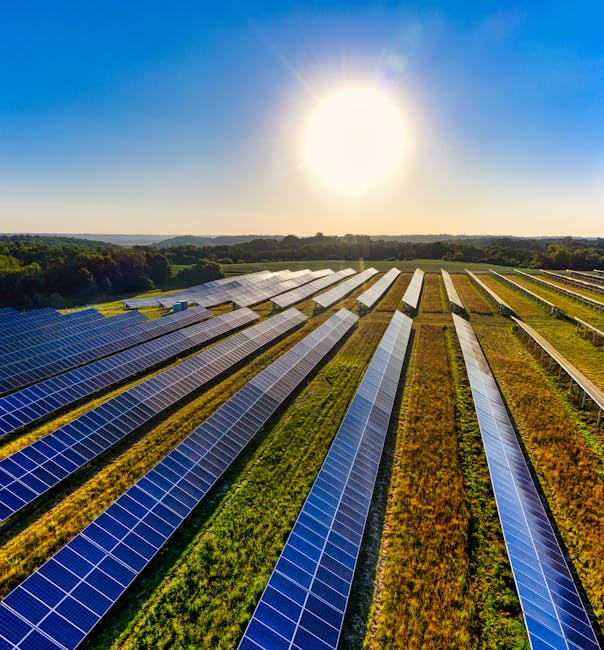Learning The Secrets About
 Harnessing the Power of Renewable Energy: How Land Acquisition Shapes the Future
Harnessing the Power of Renewable Energy: How Land Acquisition Shapes the Future
In today’s ever-evolving world, the need for sustainable and clean energy sources has become increasingly vital. As we strive to reduce carbon emissions and combat climate change, renewable energy remains at the forefront of this global shift. While the benefits of renewable energy are widely acknowledged, the process of land acquisition plays a critical role in shaping the future of renewable energy. In this article, we will explore the importance of land acquisition in the renewable energy sector and its impact on the sustainable development of our planet.
Understanding Renewable Energy
Before delving into the significance of land acquisition, let’s briefly understand what renewable energy entails. Renewable energy is derived from sources that are naturally replenished, such as sunlight, wind, rain, tides, and geothermal heat. Unlike fossil fuels, which deplete over time, renewable energy sources offer a sustainable and environmentally friendly alternative. The transition to renewable energy not only reduces greenhouse gas emissions but also helps diversify energy sources and enhance energy security.
The Role of Land Acquisition
For any renewable energy project to take shape, sufficient land must be acquired. Land acquisition refers to the process of acquiring rights, whether through purchase, lease, or other means, to use a particular piece of land for a specific purpose. In the context of renewable energy, land acquisition is carried out to establish solar farms, wind farms, hydropower plants, and other renewable energy installations. It serves as the foundation upon which these projects can be developed and operated.
Optimizing Land for Renewable Energy
Choosing the right land for renewable energy projects requires careful planning and consideration. Factors such as accessibility, topography, wind speed, solar radiation, and environmental impact play a crucial role in deciding the suitability of a particular location. Solar farms, for instance, require vast expanses of land with high solar exposure, while wind farms require areas with consistent and strong wind patterns. By strategically selecting land, developers can optimize energy output, maximize efficiency, and minimize environmental impact.
Balancing Land Use and Environmental Conservation
As the renewable energy sector continues to expand, questions arise regarding the impact of land acquisition on wildlife habitats, ecosystems, and biodiversity. It is crucial to strike a balance between sustainable energy development and environmental conservation. To mitigate the impact and preserve natural habitats, developers often implement measures such as habitat restoration, offsetting biodiversity losses, and conducting environmental impact assessments. By adopting sustainable practices, we can ensure that renewable energy projects coexist harmoniously with the environment.
Community Engagement and Empowerment
Land acquisition also has significant social implications. Engaging with local communities and empowering them through renewable energy projects can create positive socio-economic impacts. Local job creation, community ownership models, and shared revenue streams are just a few examples of how land acquisition can benefit communities. Additionally, investing in renewable energy infrastructure can enhance energy access in rural areas, improving quality of life and fostering economic development.
Challenges and Future Directions
While land acquisition plays a pivotal role in renewable energy development, it is not without its challenges. Competing land uses, lack of suitable land, regulatory hurdles, and community opposition are some of the obstacles faced by developers. Addressing these challenges requires collaboration between policymakers, communities, and industry stakeholders. Governments can streamline regulatory processes, incentivize sustainable projects, and ensure fair compensation for landowners. Community engagement and public awareness campaigns are crucial in fostering acceptance and understanding of renewable energy projects.
Looking ahead, land acquisition will continue to shape the future of renewable energy. As we strive to transition towards a more sustainable energy landscape, it is imperative that we prioritize responsible land use and environmental stewardship. By incorporating renewable energy sources intelligently and engaging local communities, we can pave the way for a greener and brighter future.
Embrace the Power of Renewable Energy
The potential of renewable energy is vast, and its benefits are undeniable. By harnessing the power of renewable sources, we can reduce our reliance on fossil fuels, mitigate climate change, and create a more sustainable future. However, we must remember that behind every renewable energy project lies the crucial process of land acquisition. So, let’s work together to optimize land use, protect our environment, empower communities, and embrace the remarkable potential of renewable energy. The future is in our hands; let’s make it green.